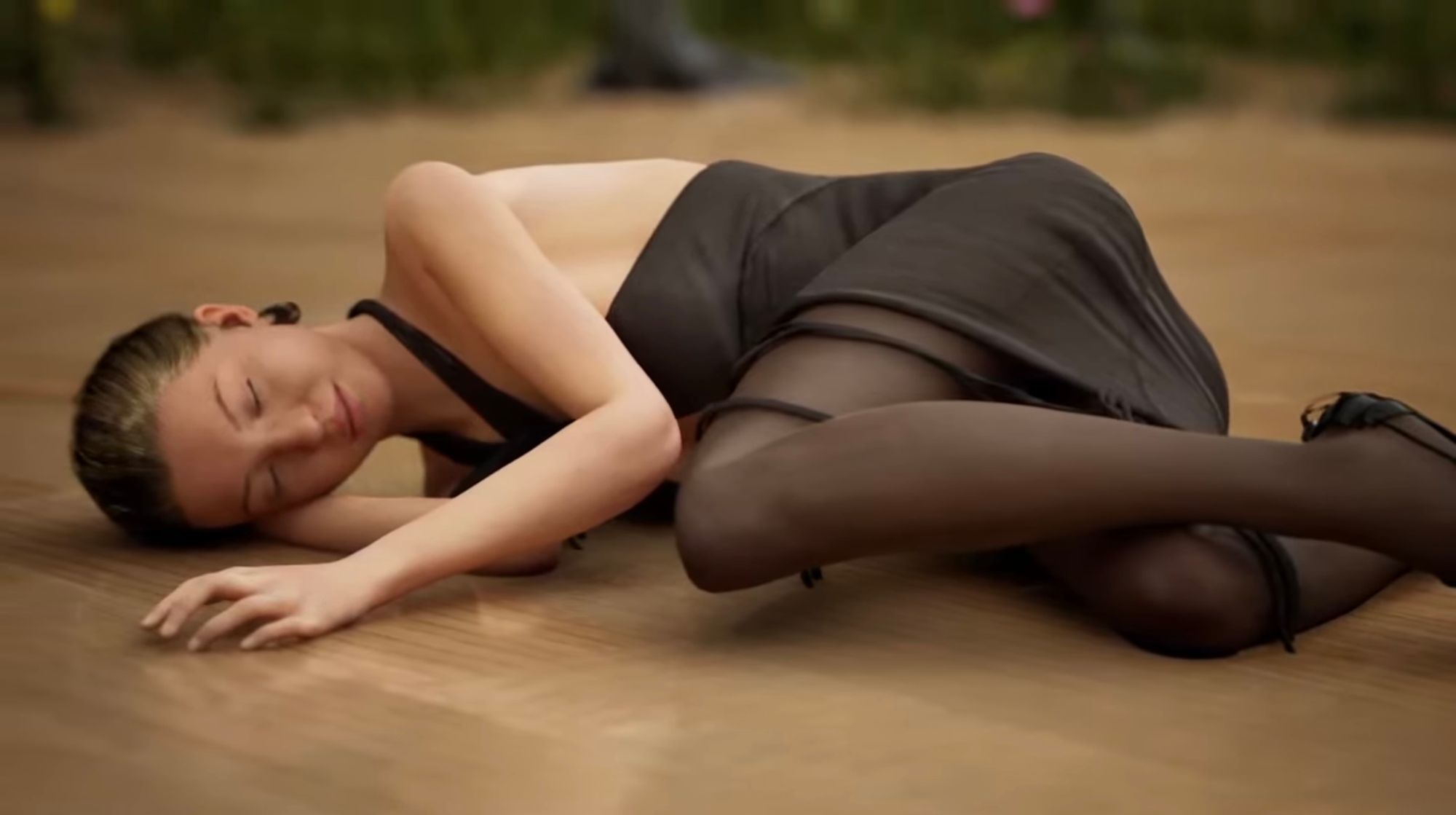The Wolf, the Lamb, the A.I. and Lila Moss
"The Wolf and the Lamb" is an A.I.-generated streaming experience that blends art, fashion, and technology to explore the relationship between humans and machines and push the boundaries of creative collaboration.
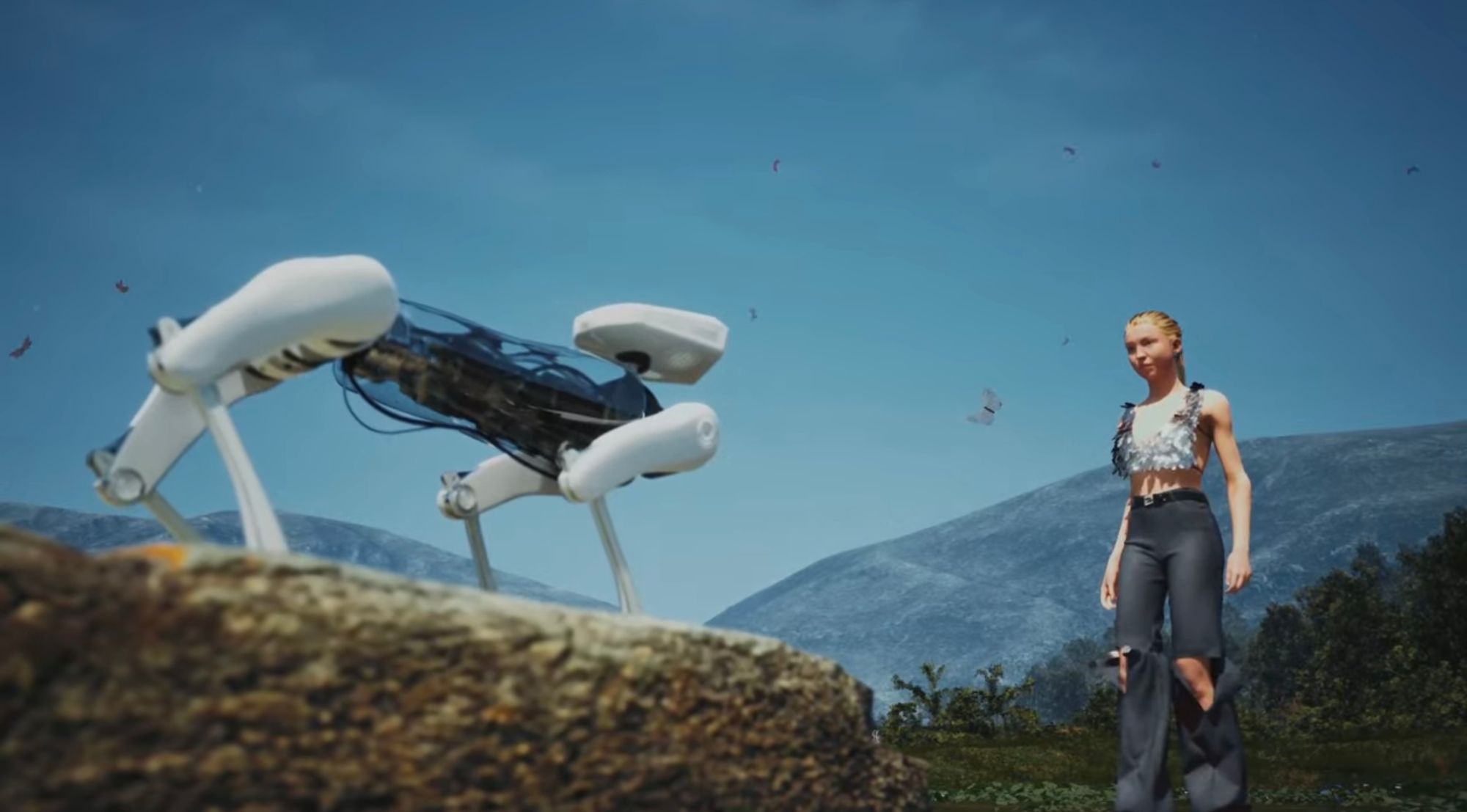
co-written with Antonin Gaultier
A recent project dives into the space of mixing art and technology and it is the A.I. generated streaming experience called "The Wolf and the Lamb." This groundbreaking initiative takes inspiration from Coperni's Fall-Winter 2023 show, which is based on Jean de La Fontaine's popular French fable. The aim of this project is to find a better balance between humans and technology, utilizing generative A.I. to constantly evolve and represent a current of possibilities.
Directed by Florent Canale and Alexandre Silberstein, "The Wolf and the Lamb" brings together a diverse set of artists and technologists to collaborate on this innovative streaming experience. It is worth noting that the complexity of this collaboration is not to be underestimated. The project requires the expertise of various individuals including Unreal Artists, UE Environment Artists, Clothing, Accessories and props Modeling Artists, Coding & AI experts, Motion Capture Models, Color Graders, Stylists, Designers, Creative Consultants, Music Advisors, and more.
The partnership between artists and technologists in projects like "The Wolf and the Lamb" brings forth a unique challenge. Both parties have to navigate the complexities of intellectual ownership and contractual agreements. With artists contributing their creative vision and technologists bringing their technical expertise, it is crucial to establish a clear understanding of each team's contributions and how they will be credited for their work.
This streaming experience is a digital extension of Coperni's real-life show that took place in Paris. The fashion brand incorporated robo-dogs named Spot from Boston Dynamics, which interacted with models on the runway. This fusion of technology and fashion reflects the brand's exploration of man's interaction with machines, as inspired by the fable of "The Wolf and the Lamb."
Interestingly, Coperni's show with the inclusion of robo-dogs is reminiscent of a historic fashion moment from Alexander McQueen. In 1999, McQueen's Savage Beauty show at The Metropolitan Museum of Art in New York featured model Shalom Harlow rotating on a turntable while being spray-painted by two industrial robots. This iconic moment showcased the merging of art and technology, creating a visually stunning and thought-provoking experience for the audience.
"The Wolf and the Lamb" and Coperni's incorporation of robo-dogs build upon this legacy of pushing the boundaries of art and technology. By exploring the possibilities offered by A.I. generated scenes, this streaming experience opens up new avenues for artistic expression and challenges the traditional notions of creativity. The use of generative A.I. allows for a constant flow of materials, data, and algorithms, creating a dynamic and ever-changing experience for viewers.
The streaming experience features an avatar of Lila Moss, the daughter of renowned model Kate Moss, wearing designs from Coperni's Fall-Winter 2023 fashion show. The copyright for Lila Moss' avatar and the fashion designs belongs to the respective owners, while the rest of the project is the intellectual property of 8849, Coperni, and Alexandre Silberstein.
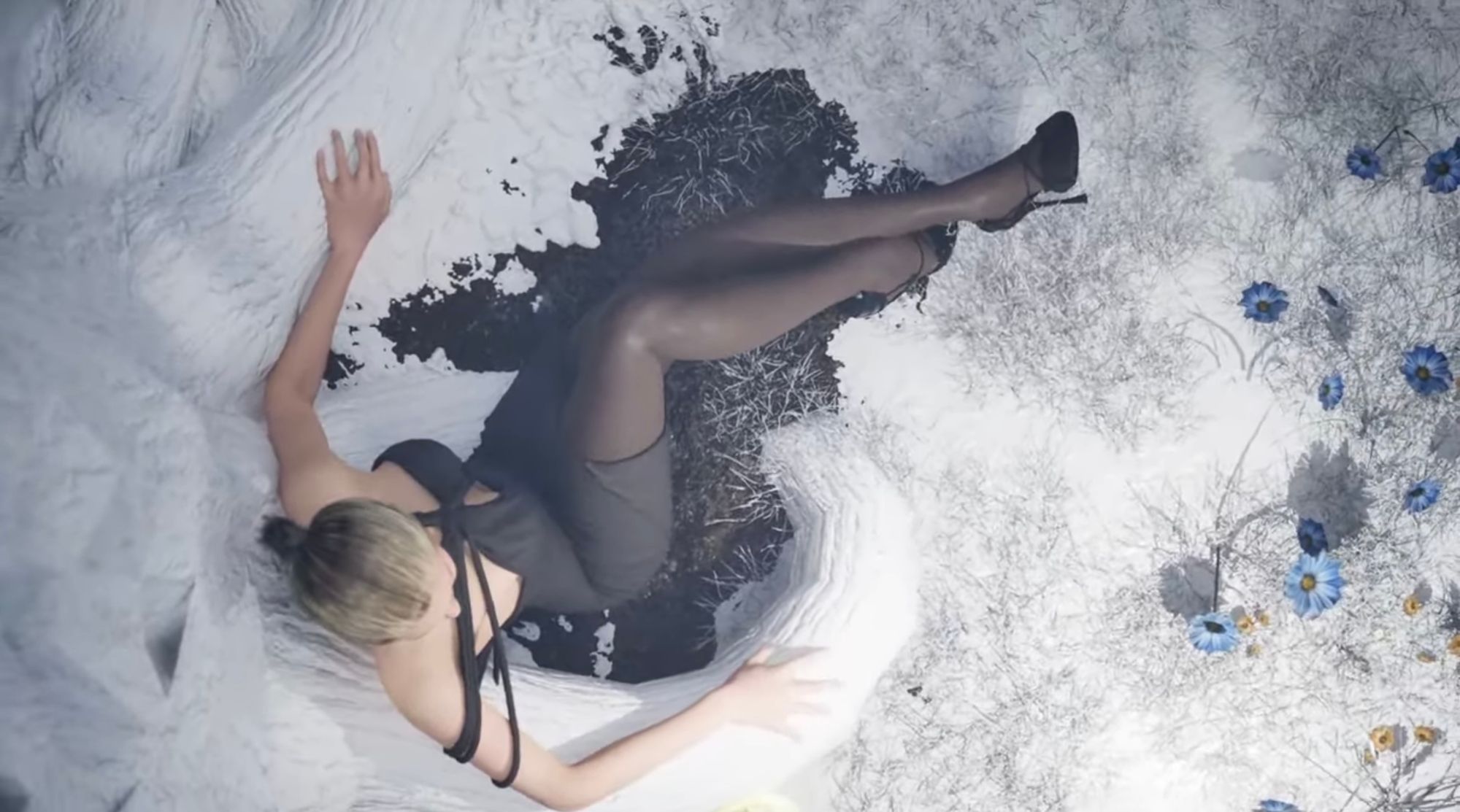
Using Epic Games' Unreal Engine 5.2, the scenes generated by A.I. showcase a fusion of fashion, technology, and storytelling. The project aims to explore the relationship between humans and technology, inviting audiences to interpret and reflect on this dynamic. The incorporation of motion capture models, color grading, and music further enhances the immersive experience, blurring the boundaries between reality and the virtual world.
The project's inspiration from Jean de La Fontaine's "The Wolf and the Lamb" (or Aesop) adds an additional layer of meaning and symbolism. The fable's themes of power dynamics, conflict, and the balance between predator and prey resonate with the current relationship between humans and technology. By reimagining this timeless story through the lens of A.I. and fashion, "The Wolf and the Lamb" encourages audiences to explore their own interpretation of this complex relationship.
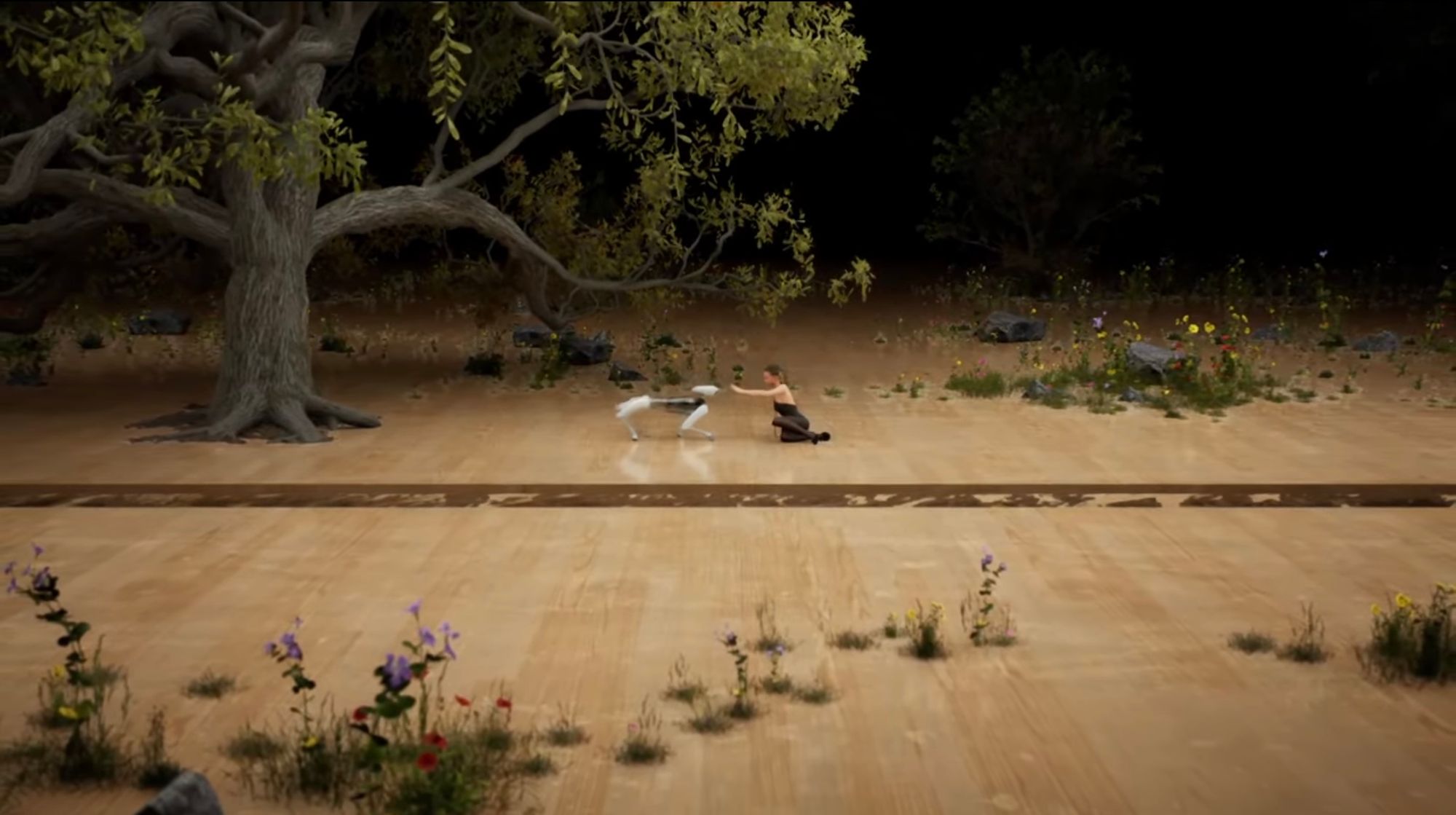
"The Wolf and the Lamb" not only builds upon the heritage of art and technology but also pushes the boundaries of the fashion industry. Coperni's use of robo-dogs in their real-life show signifies their willingness to embrace technological advancements and explore new possibilities. This bold move challenges the traditional runway format and opens up opportunities for innovative and immersive fashion experiences that captivate audiences.
As the streaming experience unfolds, for 6 months until end of March 2024, viewers are taken on a journey through various environments and scenarios, each generated by the A.I. algorithm. The constant evolution and flow of scenes create a mesmerizing and ever-changing visual spectacle. The combination of cutting-edge technology and artistic expression results in a thought-provoking and captivating experience that pushes the boundaries of art, fashion, and technology.
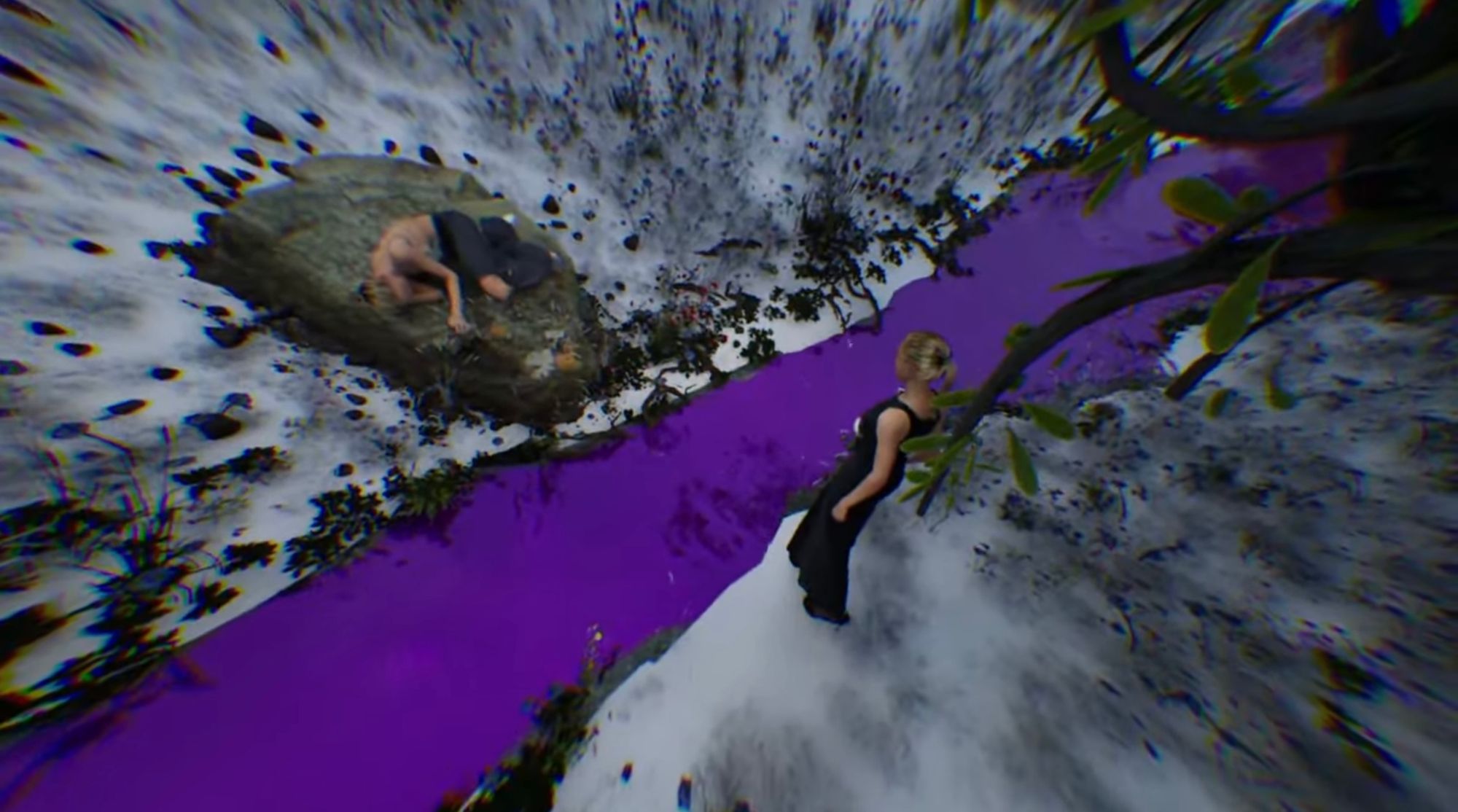
"The Wolf and the Lamb" is a groundbreaking streaming experience that combines art, fashion, and technology. Inspired by Coperni's Fall-Winter 2023 show and Jean de La Fontaine's fable, it explores the dynamic between humans and machines through the use of A.I. generated scenes. The project pushes the boundaries of creative collaboration and invites viewers to reflect on their own perceptions of the relationship between technology and society.
Kultur seeks to enhance the facilitation of complex projects by fostering trust and efficiency while bridging cultural gaps between discerning clients, artists, and technologists.
